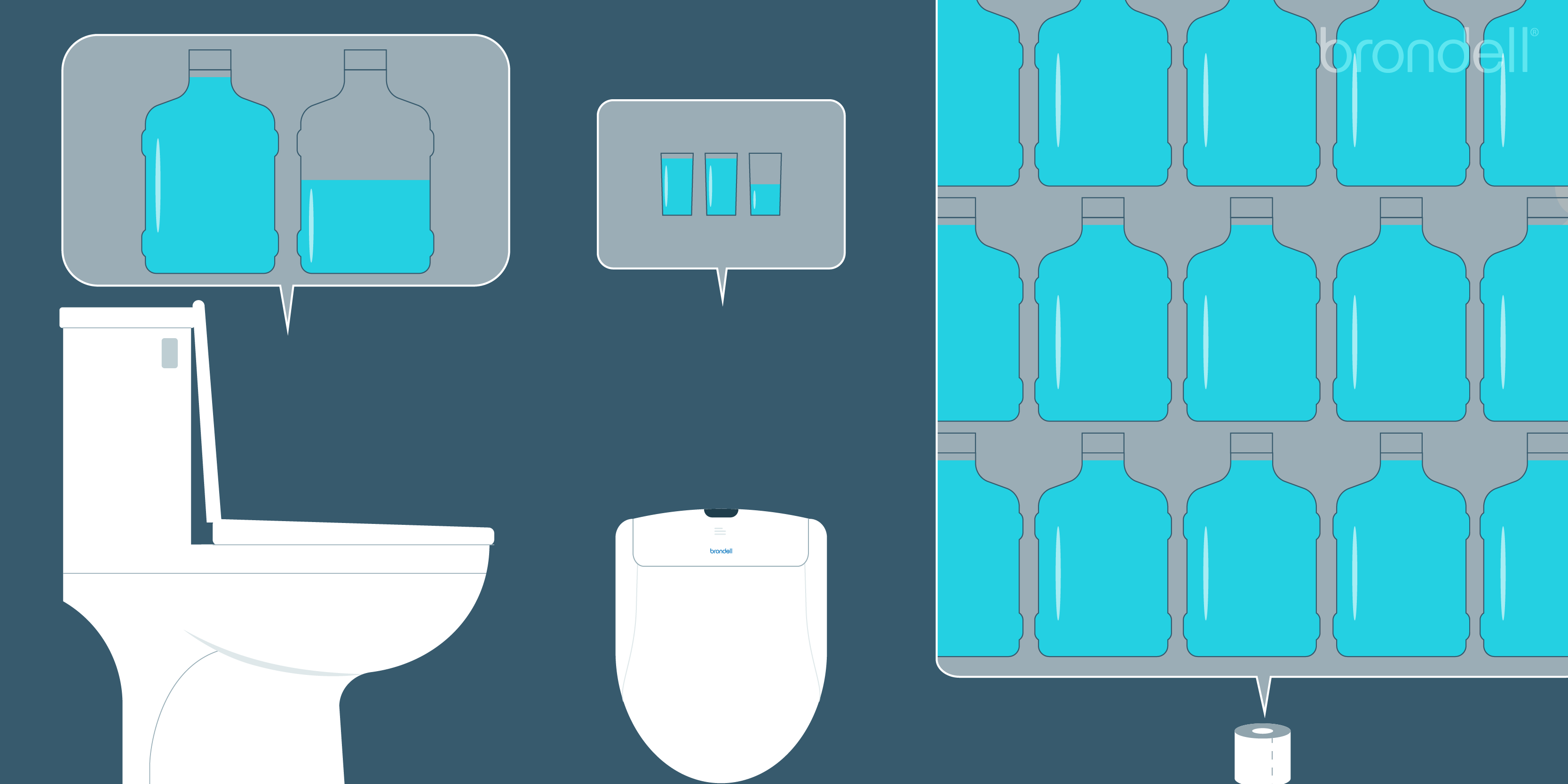Bidets users are unique among today’s smart set of personal health enthusiasts. Among the many traits they tend to possess like curiosity, tech savvy, good hygiene and eyes toward the future is a deep sense of environmental accountability and eco awareness. A big influencer in many new bidet users’ purchase decisions is the environmental impact they’ll have by eliminating up 100% of toilet paper from their bathroom routines.

By cleaning you with a stream of fresh water, bidets are the best modern alternative to the huge natural resource strain that is the western toilet paper standard. If you haven’t yet asked yourself how much toilet paper the average American uses every year, it’s worth taking a look. In the US alone, we’re using 36 billion rolls of toilet paper annually. That’s a total of 15 million trees worth of wipes. To put it in perspective, that would be a forest about the size of Lake Tahoe. To put it bluntly, we’re ravaging resources, taxing trees and wiping our butts with Mother Nature. Not cool.
Of course, even with the advent of today’s bidet seat technology and the most ecological answer to the modern restroom routine, some still wonder what environmental impacts these solutions have themselves. Many have concerns over water usage, electricity, and all the waste therein. Some people ask, “ are bidets really good for the environment?” Let’s take a deeper look into the eco-efficiency of these earth saving innovations.

The Facts About Water Usage
When it comes to bidets, one of the most common ecological concerns is water usage. Many wonder how much water a bidet uses in addition the 1.5 gallons being wasted on every flush. Of course, this totally depends on the user. Obviously, there are a myriad of factors that may influence the amount of time one needs to get that perfect cleaning experience but, in general, it should take no more than twenty ounces to get anyone completely and squeakily clean. This is a very small amount of water, especially when compared to the amount used every year in the production of toilet paper. And yes, it takes quite a bit of H 20 to make all that TP. How much? 473 billion, with a B, gallons, or more water than New York City uses in an entire year, or far more than the amount used by even the most devoted bidet enthusiasts.

How to Power Your Bidet
Electricity is the other key component to most modern bidet seats. It powers toilet seat nightlights, warm air dryers, adjustable water temps, heated seats, and customizable nozzle oscillation. Virtually all modern bidets seats are powered by a three-pronged cord plugged into a nearby outlet. This makes it easy to unplug or power depending on whether or not you’re using the bidet. Grounded electricity also saves our planet from the perils of hazardous battery waste and disposal. The matter of how much electricity bidets use also depends who’s driving. As far a as the cold hard facts and cold hard cash go, we did some research on our most advanced, power-dependent seats and found that with 60W of rated power an advanced bidet seat costs just $.006 per hour and $.14 per day in electricity. With heavy use the cost per day is just $.18. This means most electric bidet seats use less energy than your average coffee maker, computer or hair dryer.
Of course, there are many non-electric bidet seats and bidet attachments that work using the pressure from your toilet’s water supply line. These are great options if you want to get maximum cleaning without sacrificing maximum efficiency, or if you don’t have a power outlet near your toilet.
Compared to the annual 17.3 terawatts of electricity (or enough to power 53,000 homes for a whole year!) used in toilet paper production, the electric costs associated with bidet seat use are pretty meager to say the least.
Preserve Resources and Switch to a Bidet
When it comes down to the numbers, bidets are not only the ultimate option for cleanliness, comfort and hygiene but for bathroom efficiency as well. With the toilet paper industry ravaging through trees, water and electricity at such a rapid clip, it’s important to consider these modern alternatives so that we aren’t flushing the future integrity of our forests and fossil fuels right down the toilet.
